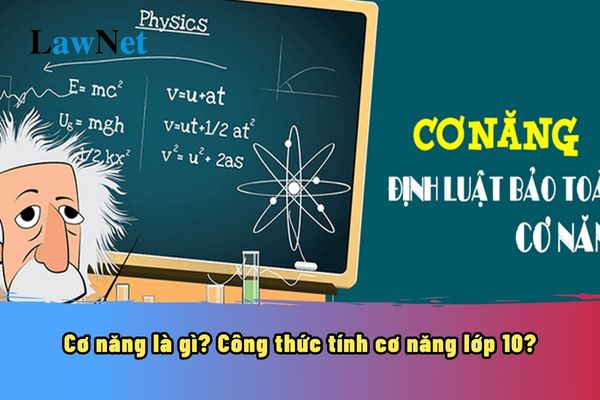What is mechanical energy? What are the formulas for calculating mechanical energy in the 10th-grade Physics curriculum in Vietnam? Is being able to specify the concept of mechanical energy one of the required outcomes in the 10th Grade Physics curriculum?
What is mechanical energy? What are the formulas for calculating mechanical energy in the 10th-grade Physics curriculum in Vietnam?
Mechanical energy is the sum of the energy possessed by a moving object, including both kinetic energy (energy due to movement) and potential energy (energy due to position). In other words, mechanical energy is the ability of an object to perform work.
10th-grade students may refer to the detailed formulas for calculating mechanical energy below:
|
What is mechanical energy? What are the formulas for calculating mechanical energy in the 10th-grade Physics curriculum in Vietnam? As stated earlier, mechanical energy is the sum of the energy possessed by a moving object, including both kinetic energy (energy due to movement) and potential energy (energy due to position). |
*Note: The information regarding What is mechanical energy? What are the formulas for calculating mechanical energy in the 10th-grade Physics curriculum in Vietnam? is for reference only./.

What is mechanical energy? What are the formulas for calculating mechanical energy in the 10th-grade Physics curriculum in Vietnam? Is being able to specify the concept of mechanical energy one of the required outcomes in the 10th Grade Physics curriculum? (Image from the Internet)
Is being able to specify the concept of mechanical energy one of the required outcomes in the 10th Grade Physics curriculum in Vietnam?
Under the regulations in Section 5 of the General Education Program in Physics issued together with Circular 32/2018/TT-BGDDT, the required outcomes in the 10th Grade Physics curriculum are as follows:
Kinetic and Potential Energy
- From the uniformly accelerated rectilinear motion equation with an initial velocity of zero, derive that the kinetic energy of an object equals the work done by the force applied to the object.
- State the formula for calculating potential energy in an even gravitational field, applying it in simple cases.
- Analyze the transformation of kinetic and potential energy of an object in some simple cases.
- State the concept of mechanical energy; articulate the law of conservation of mechanical energy and apply it in some simple cases.
Power and Efficiency
- From some practical situations, discuss the physical meaning and definition of power.
- Apply the relationship between power (or work execution rate) with the product of force and velocity in some practical situations.
- From practical situations, discuss the definition of efficiency and apply efficiency in some real cases.
Thus, according to the current 10th-grade Physics curriculum, students must be able to specify the concept of mechanical energy, articulate the law of conservation of mechanical energy, and apply it in some simple cases.
What are the requirements for 10th-grade students to achieve the "Good Student" title for the whole school year in Vietnam?
Under point a, clause 1, Article 15 of the regulations issued together with Circular 22/2021/TT-BGDDT:
Commendations
1. Principals shall award certificates of achievement for students
a) End-of-year commendation
- Award the title “Học sinh Xuất sắc” (Excellent student) for students who have obtained Excellent training and learning results for the entire school year and achieved DTBmcn of at least 9.0 in subjects that are assessed via both feedback and scores.
- Award the title “Học sinh Giỏi” (Good student) for students who have obtained Excellent training and learning results for the entire school year.
b) Commend students for having unexpected merits in training and learning in the school year.
2. Students with special achievements shall be considered and requested for commendation by schools.
Additionally, according to clause 2, Article 9 of the regulations issued together with Circular 22/2021/TT-BGDDT:
Assessment of learning results of students
...
2. Learning results in each semester and school year
For subjects assessed via both feedback and scores, DTBmhk is used to assess learning results of a student in each semester while DTBmcn is used to assess learning results of a student in the entire school year. Learning results of a student in each semester and in the entire school year shall be assessed by one of 4 categories: Excellent, Good, Qualified, Unqualified.
a) Excellent:
- All subjects assessed with feedback are placed in Qualified category.
- All subjects assessed by both feedback and scores have minimum scores of 6.5 for DTBmhk and DTBmcn with 6 subjects among which have minimum scores of 8.0 for DTBmhk and DTBmcn.
...
Thus, according to the regulation, to achieve the "Good Student" title for the whole school year, all subjects assessed by both feedback and scores of 10th-grade students have minimum scores of 6.5 for DTBmcn with 6 subjects among which have minimum scores of 8.0 for DTBmcn.

